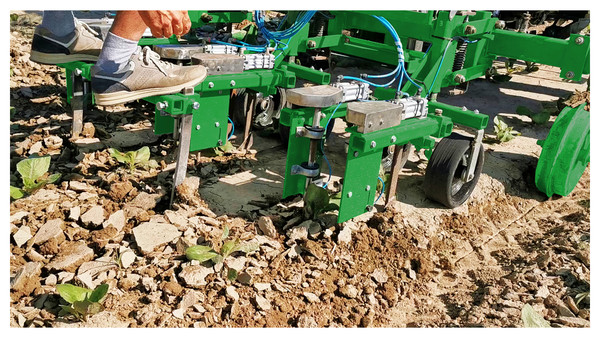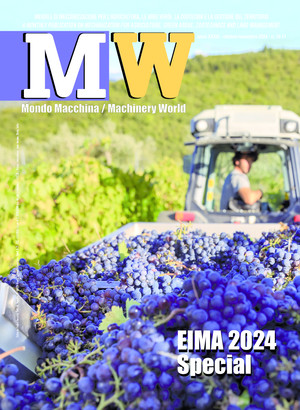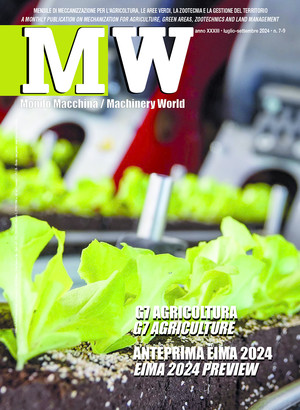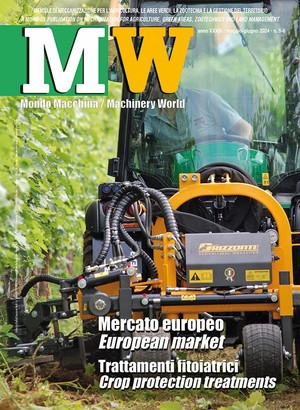
Weeding: all the benefits, all the applications
Weeding was often neglected in the past, but it is a simple yet highly effective mechanical weeding method. It has many agronomic and environmental advantages recently brought back into fashion for both open field and greenhouse cultivation, mainly if conducted organically
With the increase in non-traditional cultivation approaches, weeding has been practically rediscovered in recent years. It brings tangible benefits both on the more traditional spring-summer open field crops (such as corn and soybeans) and organic crops. In fact, it ensures an excellent mechanically driven weed elimination without synthetic pesticides. Moreover, the superficial breaking action of the working organs around the plants promotes soil aeration. Clearly, the precision of the weeding's teeth action is crucial to prevent damage to the crop, whether due to partial or total uprooting of the root system or damage to the epigeal part, caused by the impact of small clods of earth raised as the hoeing machine passes. A high degree of precision is also essential to eliminate the nearest weeds as effectively as possible, which can interfere with regular crop growth. Moreover, due to the ongoing climate change, adverse and sudden meteorological events, such as torrential rains, periods of torrid heat or fierce winds, are occurring increasingly frequently, resulting in critical growth situations, starting from the emergence of seedlings. In the latter case, the use of strimming harrows, similar in their action to weeders, can solve the situation.
Weeding
Since the power demand is somewhat limited, small tractors with limited power (even only 50 HP), coupled to 4-5 m wide models, are enough to carry out this work. The advancement speeds are generally relatively high, even more than 10 km/h, to the advantage of more effective braking of the superficial crust.
In open field
The device is traditionally composed of: (i) several rows of spring-loaded tines (or hoes) functional for weed eradication; commonly, the rows are staggered to maintain the desired inter-row but avoid clogging due to loose soil. In addition, tines and hoes have a structure that entails a high resistance to wear even when working in clayey or skeleton-rich soils; (ii) lateral deflectors that hold back clods of earth in the area of action of the rows of tines; they can be floating, i.e., they adapt to the soil profile, or disc-shaped, so as to contribute to breaking up the surface crust; (iii) working depth adjustment devices, for constant and uniform action; (iv) an articulated parallelogram bearing structure, characterized by a high ground clearance in the frontal part, to avoid damages to the crops and to be able to intervene effectively even in advanced vegetative stages of the crop. There are many different settings and frames on which the spring tines are mounted (fixed, manually, or hydraulically folding, or with independent sections). The working row spacing can be adjustable, from 45 to 75 cm. The number of rows of the working units is also variable, from 3-4 up to 8-12 rows.
One alternative capable of profitably working on many crops, from legumes to most open-field horticultural crops, is to adopt rotating devices to replace traditional tines/hoes. A pair of star-shaped discs rotating on convergent inclined axes (followed by pairs of hoes and deflectors) are able to eradicate weeds without damaging the crop. The external blades have a curved profile and penetrate the soil at an angle of 28°. The device is equipped with protection against impact with stones to avoid damage and clogging.
A significant added value together with weeding is the opportunity to conduct mineral fertilization. In this case, the machine is integrated with one or more hoppers placed in the upper part of the frame and a centralized device to adjust the fertilizer dose. The hoppers are 400 to 1000 liters in volume, depending on the size of the weeder. As the fertilizer is laid down during weeding, it is directly buried, ensuring faster action and optimal absorption by the crop.
In greenhouse
For high-income crops grown in protected settings, the precision of intervention becomes even more critical, as it is essential to avoid any damage. Moreover, since the work is conducted in a confined environment, it is vital to maintain a healthy working environment for the operators. Therefore, the use of tractors and, more generally, electrically driven machinery is on the rise. Consequently, models have been developed that use plant recognition with fiber-optic sensors so that the working parts can move out of the way when running into the seedling. The weeder Optyma of Oliver Agro from Engazzà di Salizzole (VR) employs “smart farming" techniques: It is an electrically driven model for working speed of about 1,2-1,5 km/h, which is equipped with weeding units mounted on a fixed type of frame for minimum inter-row distances of 25 cm and inter-plant distances of 12 cm. This weeder is highly suitable for sown or transplanted vegetable crops with mulching of the prose, on the flat or the ridge. The tractor's electrical system drives the digital fiber optic sensors, the control unit, and the control console of the weeder. The operator can directly manage the latter with a seat placed on board the machine. Alternatively, an automatic driving system is available based on a video camera that controls the direction to be taken.
The weeding devices consist of several parts: two knives cut the superficial crust undermining the weeds and preventing the soil from being excessively moved by the subsequent undermining hoes. The action of the latter can be adjusted both in-depth and in width. On the contrary, the knives intervention is automatically controlled with extreme precision by the digital fibre optic sensors. The weeder is also equipped with plows (of different shapes and sizes), carrying the weeding between the rows. Finally, a pneumatic unit is also installed, consisting of a blower with a pressure regulator that constantly frees the weeding elements from any residue to avoid clogging.
Strip harrows
One effect that is in some ways similar to weeding is that produced by the strimming harrows, which act on the most superficial layer of the soil. The structure of this machinery is simple and suitable for open field crops, autumn-winter cereals, and stable meadows or spring-summer crops, where the climatic trend has caused the formation of crust, resulting in difficulties in the emerging of seedlings. The weeder harrow is made of a fixed frame, equipped with light and highly elastic tines which, however, break the very superficial layer of the soil without damaging the meadows or the autumn-winter crops already emerged or the shoots which are just below the surface. In order to avoid any problem, these machines are equipped with an adjustment system on a single row or each working part in order to define the adequate working depth easily.








